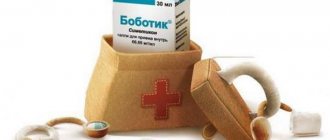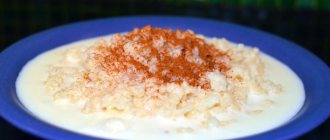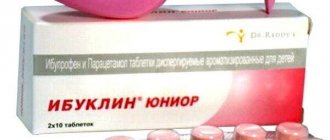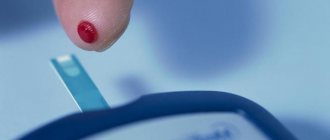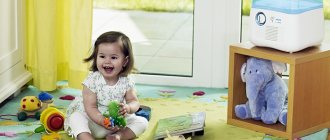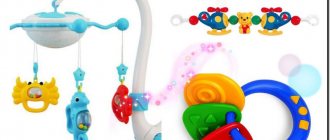Dioxidin nasal drops instructions for use
When treatment for inflammation of the nasopharynx is carried out in an adult or child in a hospital setting, Dioxidin 1% is used to prepare injections, which is combined with water.
For an adult, the rinsing dose should not exceed 70 ml. The drug must be diluted with a physical solution, while maintaining a 1:1 ratio. If Dioxidin is prescribed at a concentration of 0.5%, then there is no need to dilute it with a physical solution. When an antimicrobial chemical is used to eliminate rhinitis in adult patients, it is necessary to adhere to the following methods during the course of therapy:
- Washing. In order to carry out the procedure correctly, you should use special catheters or administer the medicine using a syringe or pipette. The medicinal liquid must be administered into the nasal cavities in a dosage of 2 times a day. The prescribed dose must be poured into the nostril while the patient is in a supine position. After 20 seconds have passed from the moment the medicine is administered, the adult or child should blow their nose. Only after this is done can the doctor rinse the second nasal canal. Before infusing the medicine into the nasal cavity, the doctor must cleanse the nose of the mucus and crusts that are present in the sinuses.
- Burial. During the procedure, an adult or child should tilt their head back. After this, the specialist injects a chemical into the nasal cavities in a dosage of 3 drops in each nostril. This procedure should be carried out throughout the day.
- Inhalations. This method of drug administration is prescribed when ongoing rhinitis of a bacterial nature is complicated by the development of purulent lesions of the respiratory tract. This method is also used for diagnosed sinusitis and sinusitis. A nebulizer is an effective device for carrying out such procedures.
How to use Dioxidin in ampoules?
When treating with this antibiotic, experts recommend first of all conducting a test to determine the tolerability of the drug in an adult or child.
It is very important because it allows you to determine whether the child has allergic reactions to the components of the medicine. Only after this can this antibiotic be instilled into the nasal cavities
First, one drop of the drug is injected into one nostril, and after that an examination is carried out to determine whether the patient has an allergic condition after instilling the medicine.
If nothing unpleasant was found, this means that this antibiotic is suitable for a course of physiatry.
For treatment by intranasal instillation, specialists prescribe a solution at a concentration of 0.5 or 1%. Often the product is sprayed along with a physical solution using inhalation or nasal rinsing methods.
Dioxidine in a child's nose
Derivatives of quinoxaline, which is the active substance in the composition of the drug Dioxidin, act as a powerful antibiotic and have a toxic effect. Therefore, when treating diseases of the ENT organs in children, this remedy is rarely prescribed.
However, if in the treatment of diseases the use of other drugs with an antibacterial effect does not give the desired result, then the doctor may well prescribe this particular medicine to eliminate the painful condition
In this case, the dosage is selected individually for each sick child with special care.
The procedure for instilling the nose in small patients should be carried out as follows:
- it is necessary to clean the child’s nostrils from infectious exudate, as well as dried crusts;
- the ampoule with a concentration of 5% is opened, after which the product is drawn up with a pipette;
- It is necessary to instill two drops into each nostril, and follow the recommendations of the attending physician;
- the child must tilt his head back so that the active substance of the drug can penetrate into the nasopharynx.
Instillation in small patients should be carried out 3 times a day. The maximum duration of therapy for the treatment of diseases of the ENT organs should not exceed seven days. After opening, the ampoule should be stored in the refrigerator for no more than 24 hours.
Indications for use
The synthetic derivative of quinoxaline is not available in the form of intranasal drops, although it is often prescribed by otolaryngologists to treat various types of rhinitis.
How to drip an antibiotic into the nose if it is not sold in a specially designed container for the common cold?
First, it should be noted that Dioxidin is used only in extreme cases:
- Prolonged bacterial rhinitis with purulent discharge, which does not respond to treatment with other groups of antibacterial medications;
- Development of sinusitis;
- Complications of otitis media extending to the upper respiratory tract;
- Chronic diseases of the ENT organs requiring long-term use of antibiotics;
- Rhinitis in people with immunodeficiency conditions.
How to use Dioxidin in ampoules? Firstly, before starting the treatment course, experts recommend conducting a drug tolerance test.
This is necessary to identify an allergic reaction to the active ingredients. To determine whether it is possible to drip an antibiotic into the nasal cavity, first drop one drop into the nostril. After a few hours, an examination is carried out to determine whether the patient has an allergy.
If not, then the medicine is suitable for a course of phthisiology.
A 0.5% or 1% solution is suitable for local intranasal instillation. It is often sprayed together with saline solution by inhalation or nasal rinsing.
It should be noted
An ENT specialist should explain how to dilute an antibiotic for instillation into the nasal cavity, taking into account the characteristics of the patient’s body and the severity of his pathology.
What is sinusitis
Sinusitis belongs to a group of widespread diseases. Most often, the process affects one side of the nose; this pathology is called unilateral. However, there are cases when the lesion affects both sides of the nose, which indicates the presence of bilateral sinusitis. Among the characteristic signs of the disease are:
- congestion of the affected half of the nose;
- the presence of purulent or mucous discharge;
- pain in the sinus.
With unilateral sinusitis, pus and inflammation are localized on one side, with bilateral sinusitis - on both
Methods for diagnosing and treating the disease depend on its type and accompanying symptoms, for example, the acute form of sinusitis (occurring against the background of ARVI/ARI) manifests itself more clearly. A person feels a compressive pain in the head, chills, fever, discomfort in the area of the eye sockets and upper jaw.
In the chronic form, the development of the disease is slower and the symptoms are mild, which often makes diagnosis difficult.
How to use the drug
If symptoms of poor tolerance or side effects occur, doctors will stop the drug or adjust its dosage.
Ointment
Dioxidin in the form of an ointment is used both independently and in combination with other necessary ingredients. In case of inflammation of the maxillary sinuses, a small amount of the substance is placed into the previously cleaned nasal cavities using a cotton swab or gauze pad, which are then removed, and a light massage of the nose is performed to evenly distribute the medicine.
The course of therapy depends on individual prescriptions and varies between 1–3 weeks.
It is not recommended to use the ointment for more than 3 weeks, as the likelihood of addiction to the drug increases and sensitivity to its action decreases.
When not to take and what side effects it may cause
Before dripping Dioxidin into the nose of children, it is recommended that you familiarize yourself with all contraindications for use. Has a number of side effects. It is used to treat runny noses in children over 12 years of age. But doctors also prescribe it for children.
In any case, you need to use it with caution and do not use more than the specified amount. If the patient is a small child, the solution is diluted in a ratio of 1:2
The use of drops is prohibited if at least one of two contraindications is present:
- disruption of the normal functioning of the kidneys and adrenal glands;
- intolerance to individual components of the drug.
Prohibited, which is also diagnosed with kidney disease.
Side effects
Each body tolerates medicine differently. In most cases there should be no problems. But, sometimes, the body’s reaction to the use of the medicine can manifest itself with unpleasant symptoms:
- as a result of treatment of a runny nose, children rarely experience an increase in temperature;
- convulsions are possible;
- skin pigmentation;
- chills;
- the appearance of allergies, the instructions indicate this;
- problems with the gastrointestinal tract in the form of stool disorders;
- the occurrence of vomiting;
- nausea.

Most often, the occurrence of side effects indicates individual intolerance to individual components of the drug. If these symptoms are noticed while using the medicine, stop dripping Dioxidin into the child’s nose. After some time, the body returns to normal. In some cases, treatment of a runny nose with Dioxidine is not suitable for patients, and it is replaced with an analogue.
If Dioxidin is used in large quantities for a runny nose in children, an overdose is possible. If this happens, it is better to postpone taking it for a while until the body removes all toxins on its own. As soon as all symptoms pass, the child’s condition stabilizes. Sorbents can speed up the healing process. Doctors recommend drinking more fluids.
Contraindications and side effects
As was said earlier, Dioxidin is used when absolutely necessary, when other means are powerless.
The use of the drug is fraught with adverse reactions , such as:
- muscle cramps;
- headache;
- body hyperthermia;
- indigestion;
- destruction of the adrenal cortex;
- the occurrence of allergies;
- dyspeptic syndrome;
- nausea, vomiting;
- unstable stool;
- cramps and pain in the abdomen;
- photosensitizing effect.
As soon as adverse reactions appear, you should immediately stop using the drug and resort to antiallergic drugs.
The medicine belongs to the group of chemically active compounds. Due to its toxicity, the product is contraindicated for women during pregnancy and breastfeeding. The drug is contraindicated under 12 years of age, as well as in patients with renal and adrenal insufficiency. You must be careful if you are hypersensitive to the components of the drug.
Instructions for use of Dioxidin in ampoules
This remedy is usually prescribed in hospital settings, since it is dangerous for the mucous membranes. If you need to instill Dioxidin into the nose of an adult, the dosage should be agreed with the attending physician. In the absence of contraindications, three-time use is allowed. Before each instillation, you need to clear your nose of accumulated mucus so that the effect of the drug does not dissipate. The maximum single dose is 3 drops of a solution of 0.5% concentration.

According to the official instructions, this antibiotic is contraindicated in childhood, but in some cases doctors make exceptions. In pediatrics, this remedy can be used if chronic purulent processes occur. First of all, doctors prescribe gentle medications. If they do not have the desired effect, you have to use a children's solution with a concentration of no more than 0.3%. It is used twice a day, a couple of drops in each sinus.
How to dilute for the nose
Before you begin treatment, find out how to dilute dioxidin for nasal rinsing. Learn to maintain proper concentration and no complications will arise. For an adult, a medicine with a concentration of 0.5% is practically harmless. One percent dioxidine will have to be mixed with water in equal proportions. If you have to treat a child, dilute the 0.5% antibiotic with water in a 2:1 ratio. To prepare a solution of a medicine with a concentration of 1% for 1 part of the medicine, use 3-4 parts of water.
How to put it in your nose
The procedure for instilling dioxidin into the nose is no different from the intracavitary use of conventional remedies against the runny nose or sinusitis. To ensure maximum effectiveness of the drug, follow a simple sequence of steps:
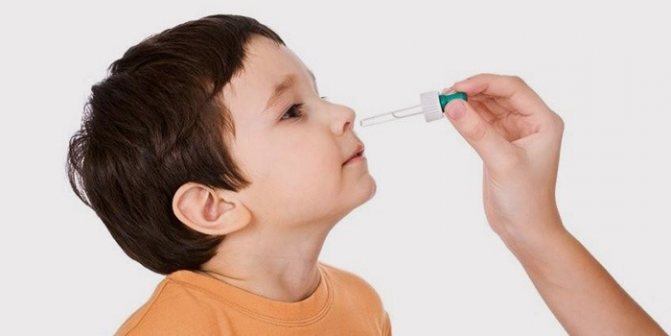
- clear your nostrils of mucus and dried crusts;
- throw your head back;
- using a pipette, drop three drops (for a child – 2 drops) into each nostril;
- within 10-15 seconds the drug will spread throughout the nasopharynx, and this will end the procedure.
Inhalation with a nebulizer

Inhalations with dioxidine for children and adults demonstrate amazing effectiveness. Such procedures are prescribed for therapeutic purposes to combat purulent nasopharyngeal diseases. To properly prepare a solution for inhalation, you need to monitor the proportion of the drug. If you are prescribed dioxidin for sinusitis or sore throat, use a solution of 0.25% concentration. To do this, mix one part of 0.5% medicine with two parts of water. Dioxidin with a concentration of 1% is diluted in double the volume of liquid. For one inhalation, no more than 4 ml of solution is used.
Dosage
In order to treat a runny nose, the medicine should be taken in the dosage specified in the instructions for use. You need to use a solution intended for intravenous administration, having a concentration of 0.5%. Using a 1% drug, it should be diluted with water in a ratio of 1 to 1.
Before the instillation procedure, mucus should be removed from the nasal passages mechanically or using special drops that have a vasoconstrictor effect. The nose can be rinsed with saline solution.
Recommendations for using the drug Dioxidin:
- To rinse, draw the solution into a syringe, remove the needle, tilt your head over the sink and inject it one by one into the nasal passages.
- For instillation - instill 2 drops of the solution intranasally 3 times a day.
Treatment lasts for 5-7 days. At the pharmacy you can order a complex combination composition with dioxidine and hydrocortisone. The quick mixture allows you to have a comprehensive effect on the problem, which speeds up the healing process.
Dioxidin for a runny nose is prescribed to children for chronic forms of rhinitis and sinusitis. You need to dilute the solution 1 to 4, instill 2 drops 3 times a day. The course of therapy is 3-5 days.
How to drip
Regarding how to drip Dioxidin into the nose of children, there are clear instructions:
- Clean the baby's nostrils from crusts and dirt with a cotton swab and boiled water.
- Open the ampoule, dilute to the desired concentration, and pipette.
- Place 1 drop of product into each nostril.
- Tilt the patient's head back for 2-3 seconds.
Dioxidin is dripped into the nose of children according to the instructions, strictly observing the dosage and course of treatment prescribed by the doctor.
You need to make sure that the baby does not swallow any drops.
Is it necessary to breed?
For external use, use 0.1%, 0.2% and 0.5% solution of the drug. Ampoules with 0.5% and 1% solution are available. Recommendations for diluting Dioxidin into the nose of children are presented in the table.
| Desired concentration | Stock solution 1%, 10 ml | Stock solution 0.5%, 10 ml |
| 0,1% | Add 90 ml saline. solution | Add 40 ml saline. solution |
| 0,2% | Add 40 ml saline. solution | Add 15 ml saline. solution |
| 0,5% | Add 10 ml saline. solution |
Saline solution is a sterile 0.9% sodium chloride solution, sold in pharmacies. The diluted solution is stored in the cold for no more than 24 hours. Before use, warm with palms or warm water. If crystals have fallen out, they will dissolve after warming up.
Dosage
The dosage of Dioxidine for children in the nose is determined by the severity of the pathology, the course of the inflammatory process, the age and state of health of the baby. The instructions recommend treatment with an antiseptic for no more than 7-10 days, instilling 1-2 drops into each nostril three times a day. For compelling indications and with normal tolerance, treatment is extended to 6-8 weeks. Symptoms of overdose - allergies, dizziness, muscle cramps, nausea and vomiting are grounds for discontinuing the drug and seeking medical help.
With a runny nose
Dioxidin is not the drug of choice for a runny nose in children. The solution is used for a runny nose as a last resort, when other treatment regimens have not given a positive result.
Indications are long-term rhinitis with abundant purulent exudate, sinusitis. You can put 2 ml of a diluted antiseptic solution into a bottle with a spray bottle and spray it on the baby’s nasal mucosa. Uniform irrigation of the nasal mucosa with Dioxidin will increase the effectiveness of treating children with a runny nose.
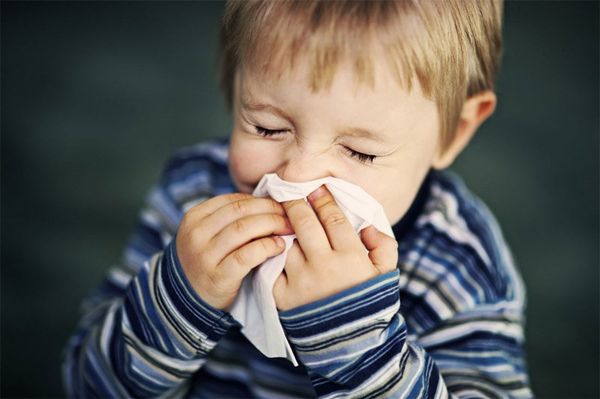
For adenoids
Dioxidine for adenoids in children is an ineffective remedy. The medicine will remove bacterial contamination without affecting the size and stage of the adenoids. Adenoids are pathological growths of the mucous membrane due to chronic inflammation. An antiseptic eliminates inflammation and prevents the appearance. You can get rid of adenoids through surgery.
What kind of beast is Dioxidin
In the middle of the last century, a potent substance with a long “name” enjoyed success in many hospitals in the country. The base is a yellow-green, odorless powder. The bactericidal agent destroys the membranes of harmful cells and prevents their proliferation.
The success of the medication among Soviet doctors was explained by its high efficiency in eliminating microorganisms that cause purulent processes. A powerful antiseptic easily copes with streptococci, staphylococci, Pseudomonas aeruginosa and pathogenic anaerobes.
Before you continue reading: If you are looking for an effective method of getting rid of persistent colds and diseases of the nose, throat, and lungs, then be sure to take a look after reading this article. This information is based on the author’s personal experience and has helped many people, we hope it will help you too. NOT advertising! So, now back to the article.
Is Dioxidin used for inhalation with a nebulizer?
Today, a nebulizer is popular in the treatment of coughs and runny noses. However, not all owners of a useful device know which solutions are suitable for inhalation and which are not. What doctors say about the use of Dioxidin in nebulizers and inhalers.
The solution can be used at home, but under strict control of the dosage of Dioxidin. Inhalations are prescribed for lung abscesses, pleural empyema, severe inflammation of the bronchi. Dioxidin is rarely prescribed for sinusitis, frontal sinusitis - in case of protracted course of the disease and the appearance of resistance (immunity) to other (weaker) drugs.
The concentrated solution is not poured into the nebulizer; it is diluted with saline solution. How to dilute Dioxidin correctly?
- ampoules with a 1% solution are diluted in a ratio of 1:4;
- ampoules with a 0.5% solution are diluted in a ratio of 1:2.
One inhalation will require 3 ml. What is left can be stored in the refrigerator for no more than 12 hours. The only point is that before inhalation, it is advisable to remove Dioxidin from the refrigerator in advance so that it warms up naturally at room temperature.
Release form, composition and packaging
The drug is available in the following dosage forms:
- 1% solution – local and intracavitary use.
- 0.5% solution – local, intracavitary and intravenous administration.
The medicine is bottled in 10 ml ampoules made of transparent glass. One package contains 10 pcs. A less concentrated solution is available in volumes of 10-20 ml.
The active substance is hydroxymethylquinoxaline dioxide, the auxiliary substance is water for injection (up to 1 ml).
Dioxidine in a child's nose when doctors recommend this drug for use
Due to its bactericidal effect, dioxidin is most often used for protracted ENT diseases, as well as for complications of acute respiratory diseases, when any bacterial or purulent infection is attached to the virus. Dioxidin is used in the treatment of viral, bacterial, purulent and fungal infections of the ENT organs. Most often, pediatricians prescribe dioxidin to children for the following diseases:
- Sinusitis;
- Sinusitis;
- Otitis;
- Purulent otitis;
- Obstruction of the nasolacrimal duct (this disease is also called “stenosis of the lacrimal ducts” and is manifested by an abundant flow of pus from the left or right eye of the child; the disease is most often caused by the physiological narrowness of the nasolacrimal duct, observed in newborns and infants, and then goes away with age) . Dioxidin acts quite quickly. The drug effectively relieves inflammation, promotes the resorption of purulent foci, and has a pronounced antiseptic effect. However, dioxidin should be used with caution. Its use is advisable only if the child’s runny nose lasts more than a week, and the mucus that flows from the nose has acquired a greenish or yellowish tint.
This is important to know
Any green or yellow mucus is a sign of a bacterial infection. If the child’s snot is clear and the runny nose has just begun, most likely it is a viral infection or allergic rhinitis. For “ordinary” kindergarten and school acute respiratory infections, you should not use dioxidine; instead, it is better to rinse your nose with a water-salt solution as often as possible. For allergic rhinitis, taking dioxidine will also not bring relief, because such a runny nose is treated with antihistamines and eliminating allergens.
Therefore, before taking dioxidin, you must show your child to the doctor and identify the origin of the runny nose. The dosage of the drug and the duration of treatment should also be agreed with the attending physician, because an overdose can be dangerous.
It is an effective remedy that promotes the rapid restoration of normal nasal breathing after operations on ENT organs, for example, after removal of adenoids. The use of dioxidine after surgery helps to avoid serious complications and promotes rapid healing of postoperative scars.
What is the drug
The drug Dioxidin is a broad-spectrum antimicrobial agent. It is mainly used in the fight against diseases caused by salmonella, staphylococci, pathogenic anaerobes, Pseudomonas aeruginosa, and streptococci. It even copes with infections that cannot be treated with antibiotics and other antimicrobial drugs.
The instructions for use state that Dioxidin is indicated for such disorders of the body as:
- cystitis;
- purulent pleurisy;
- lung abscess;
- postoperative wounds;
- phlegmon;
- peritonitis;
- empyema of the pleura.
This medication is prescribed only when conventional antibiotics do not cope with the disease. They can cause dangerous side effects, including muscle cramps, increased body temperature, headache, digestive disorders, and destruction of the adrenal cortex. Individual intolerance to the drug Dioxidin also occurs.
In accordance with the information contained in the instructions for use, the drug has a pronounced detrimental effect on pathogenic microorganisms of pyogenic flora. Dioxidin is available in ampoules containing 10 ml of solution containing 1% or 0.5% of the drug. The solution can be administered intravenously, used for intracavitary rinsing, or externally.
General characteristics of the drug
Dioxidin is available in various forms:
- Solution in a glass container, 1% active substance. Used for topical use. The package contains 10 pieces of the drug, 10 mg each.
- Solution in a glass container, 0.5% active substance. Used for intravenous use. The package contains 10 pieces of 10 mg or 20 mg.
- The ointment in the tube is used externally only. 5% active substance.
Komarovsky’s video about Dioxidin, which explains the benefits of the drug, is popular among parents.

